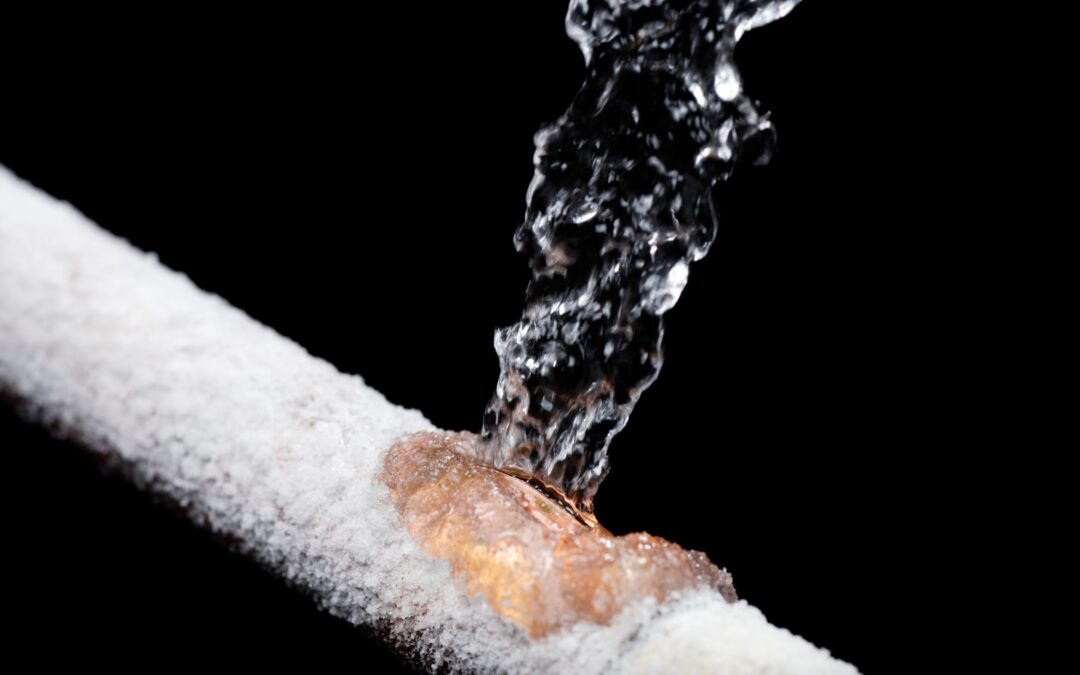As the winter chill sets in across St. Louis, residents face the familiar challenge of frozen pipes – a common yet daunting issue. When temperatures plummet, pipes can freeze and, in worse cases, burst, leading to significant property damage. This guide offers practical advice to help you effectively navigate this winter predicament.
Step 1: Immediately Shut Off the Water
First things first, if you’re dealing with a frozen pipe that’s burst, you’ll need to act swiftly. Locate and shut off your main water valve immediately. It’s a good idea for everyone in your home to know where this valve is, just in case. And, for added safety, turn off the electricity if it’s safe to do so.
Step 2: Reduce Pressure in the Pipes
Once the water’s off, open all your faucets. This might seem counterintuitive, but it’s a smart move. It helps to relieve any built-up pressure in your plumbing system and could prevent another pipe from giving way.
Step 3: Call in the Experts!
Now, it’s time to call a plumber. During cold snaps, they’re in high demand, so the sooner you get on the phone, the better. In St. Louis, our team at Bieg Plumbing is well-versed in tackling these winter emergencies.
Step 4: Locate the Problem Pipe
If you can, try to figure out where the pipe has burst. This can be a real time-saver for you and the plumber. Look for signs like reduced water pressure or visible water damage. And remember, safety first – keep electrical devices off near the affected area.
Step 5: Protect Your Floors
If your frozen pipe is in the floor, you might be facing a flood. Move your furniture and valuables to higher ground and unplug any nearby electronics.
Step 6: Attempt a Temporary Fix
If you’re feeling brave and the damaged pipe is within reach, you could try a quick fix. Wrapping a piece of garden hose around the pipe and securing it with clamps can help, but remember, this is just a temporary solution until professional help arrives.
Step 7: Start the Cleanup
Whether the plumber has arrived or not, begin cleaning up the water as soon as possible. Use wet-dry vacuums, towels, and dehumidifiers to help with this task.
Step 8: Assess and Document the Damage
After the immediate threat is under control, take a close look for any water damage. Keep an eye out for sagging ceilings or other hidden signs of trouble. This is important for your insurance claim.
Step 9: Contact Your Insurance
Once you’ve managed the immediate situation and started the cleanup, get in touch with your insurance agent. Many policies cover damages from leaks and flooding, so it’s worth checking.
By following these steps, you can confidently handle the challenges of frozen pipes this winter. Stay proactive, and remember, expert help is just a call away.
Here to Help
If you’re in St. Louis City or County area and staring down a burst pipe, remember, Bieg Plumbing is just a call away. We’ve been battling frozen pipes and other plumbing nightmares for over 60 years. So if you find yourself in a frosty predicament, don’t hesitate to reach out.
Frozen Pipes in St. Louis? Call in the Red Truck!

